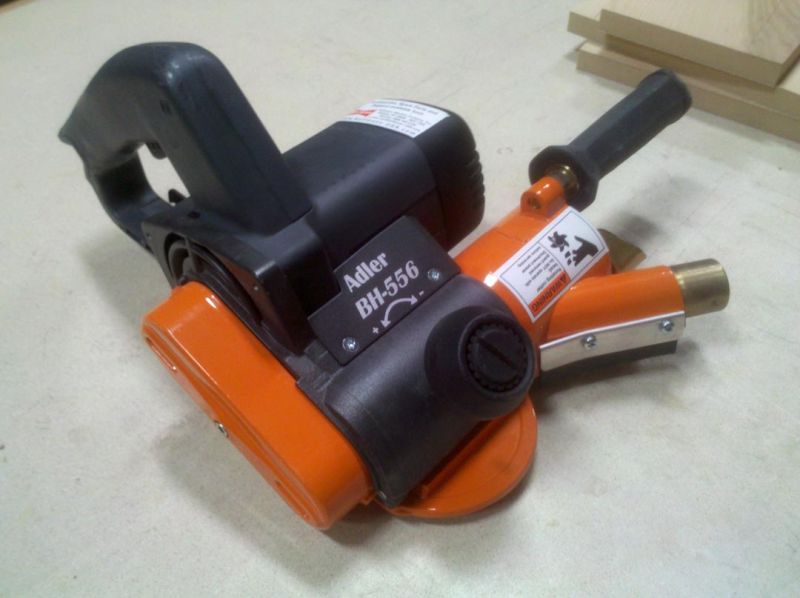MDF for Built-In Closet Shelving
A discussion of MDF's structural suitability for closet shelves and upright shelf support frames. March 3, 2009
Question
I need to build a built-in shelving unit in a master closet. I've done these before by using biscuits to make 12" shelves. They turned out great but were a lot of work gluing, scraping, sanding, etc. My local yard has 12" MDF shelving in-stock with a bullnose edge that looks great and is very inexpensive ($1.05 /foot for 12' pieces). I was planning to use birch or oak plywood for the uprights and centers with dadoes to hold the MDF shelves.
Here's where I have some questions. Has anyone used MDF for uprights and centers for built-in's instead of plywood? Is glue and a few nails from my gun enough to keep the MDF shelving in place? I see a lot about the need to screw the MDF using confirmats.
If I can do this whole job out of MDF it will cost a lot less and paint up great. However, I don't want to compromise on quality.
Forum Responses
(Cabinetmaking Forum)
From contributor P:
Between the glue, nails and the painter caulking never had a problem and the quality is still there as well.

Click here for higher quality, full size image
From contributor R:
Personally I can't stand MDF because of the formaldehyde and how fine the dust is that it clogs filters and dust masks in a heartbeat. That aside. MDF is easily worked, finished takes paint well and is generally stiffer than plywood. Two coats of dewaxed shellac or vinyl based underbody if you are using lacquer on the cuts sanding with 220 and 320 between brings back the smoothness and gets rid of the "pilling" in minutes. I use countersunk 2" screws and fill them with formula 27, sanded flush they disappear. As long as you are not trying to cover a large span unsupported you should be fine and you are correct as far as the savings is concerned. At 1.05 per foot have you figured your cost of ripping sheets at the 12" and running them through the shaper with a bullnose knife yourself? At four pieces from a 4 x 12 sheet if you need the 12 feet if not go to an 8 footer. Also, if you do have to do a wide unsupported span shelf consider using a soft maple edge 1-1/2 inch wide biscuited to the edge of the shelf for support.
For basic closet built-ins its great. What are you talking for a sheet from your supplier? I am in the north east and I can get birch paint grade plywood for 34.00 a sheet. I haven't priced MDF for a while as I haven't had a call for it lately. Also makes a good substrate for veneer. Just keep in mind. MDF has very little structural strength so in cases where you need it consider a dado instead of biscuits or just screws.
From the original questioner:
Oak sheets go for $63 and Birch are $66 from my local yard. At $1.05/foot for 12 footers with the bullnose, it's a time a money saver. I agree that MDF is nasty stuff to work with. The less I have to cut it - the better. I have a small shop so I may opt to get the local guys to rip a sheet of MDF into 12" 8 footers to use as the uprights.
From contributor M:
MDF is a great structural material, contrary to what was stated earlier. It is stiffer than most plywood. Do this test: rip 4" or so wide strips of plywood, particle board, and MDF of the same thickness about 4' long and then try to break them in half. You'll see which is strongest.
What MDF doesn't have is good edge strength, that is, it splits easily at the edges from screws, etc. I have found, incidentally, that ultra-light MDF is better for this than the dense stuff. I guess it's because, having less density, there is less displacement of material at the edges when fasteners are inserted. It's like inserting a screw without drilling into pine as opposed to maple.
From the original questioner:
I finished the job. I built the shelves out of MDF using biscuits to join the shelves to the uprights and it came out very nice. The shelves weren't very long so flexing wasn't a problem. It painted well too. However, I hated the dust from the MDF. I even had the local shop do most of the cuts - leaving only the final cuts and biscuits to me. I guess I won't know if the dust is harmful for 20 years - when I die from some carcinogen. Of course, after working with pressure treated lumber for years before they replaced it with stuff that was safe(r) - it's a toss up as to which will kill me first.
